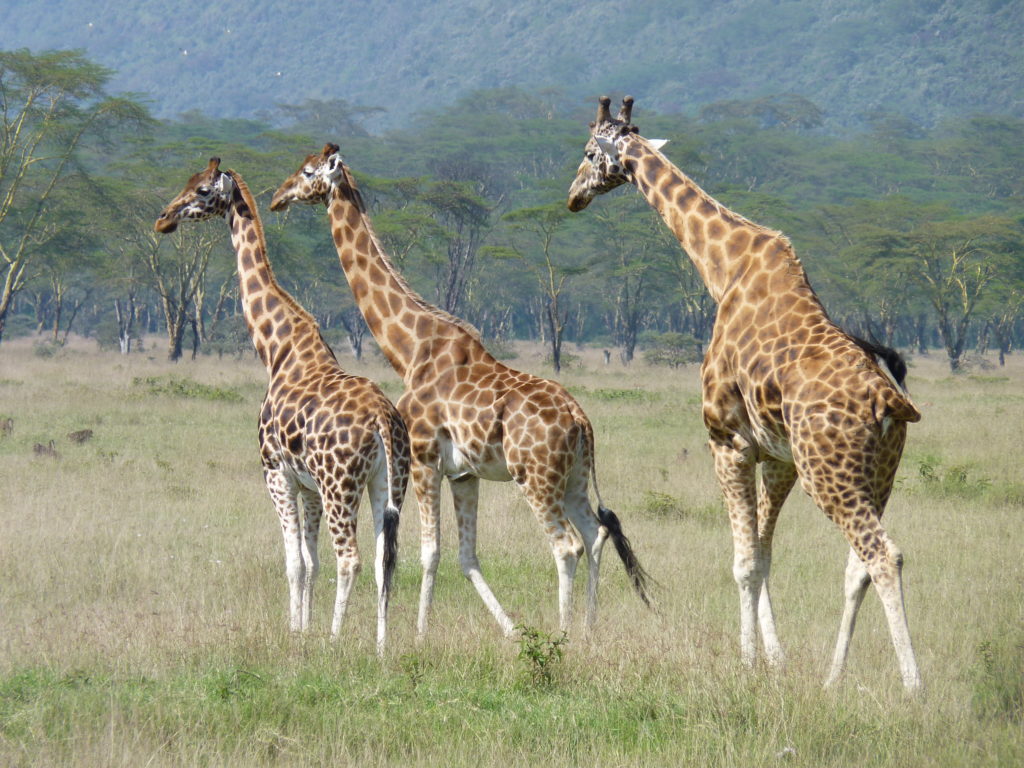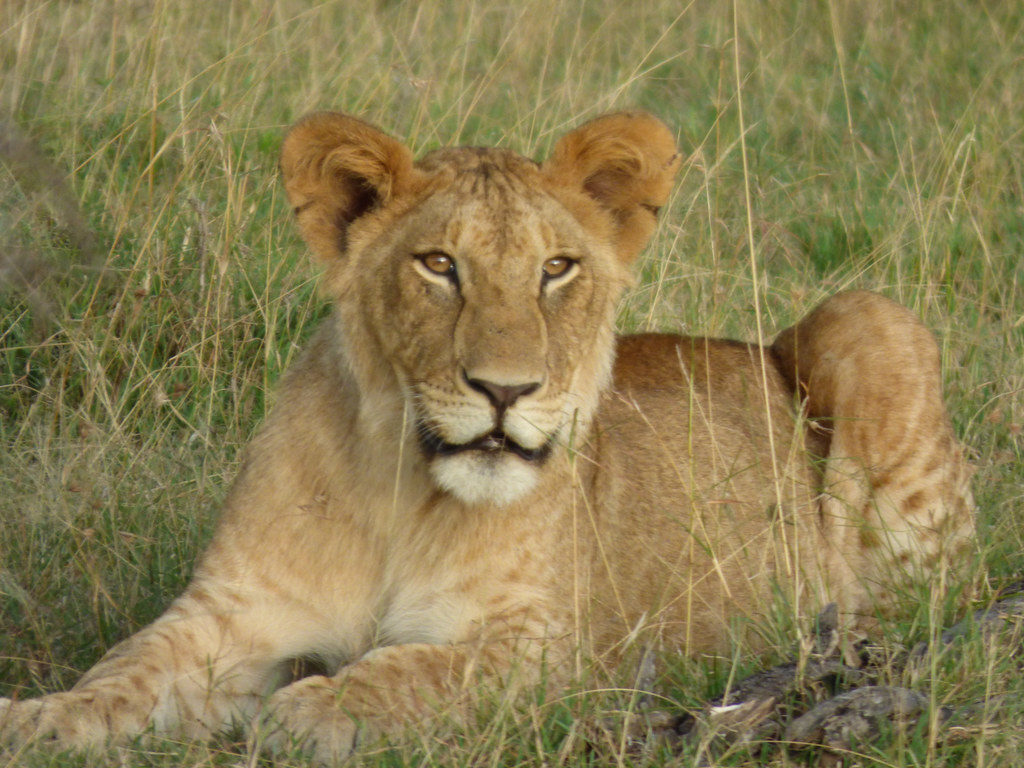By the stroke of a legislative pen, a list of iconic and in some cases endangered wild animals can now be manipulated as farming stock. What happens next is anyone’s guess.
Lions, cheetahs, rhinos and zebras were among 33 wild species that became farm animals as of May 2019, when the South African Government approved a brief amendment to the Animal Improvement Act (AIA), which governs livestock breeding.
There has been virtually no mention of this in the media, as the legislation was slipped through without public consultation. There’s no international precedent for such a sweeping legal domestication of wild animals.
The act permits “improvement” of “genetically superior” animals to “increase production or performance” by licensed animal breeders. It states that “different kinds of animals or breeds of such kinds of animals may be so declared,” but it is unlikely that at the time the legislation was promulgated in 1998, such a declaration was meant to include wild and especially endangered and iconic species.
The AIA permits “animal breeder societies” to manipulate breeding outcomes in the way we have altered aurochs into docile cows, the grey wolf into many breeds of dogs and produced “golden” impala. Most of these breeds can no longer survive in the wild.
The list of animals added to the act includes Cape buffalo, mountain zebra, lions, giraffe, white and black rhino, cheetahs, a large number of plains game, ankole cattle, water buffalo and Tankwa and veld goats.

The legislation allows artificial insemination, the collection of semen and embryos as well as the transfer of embryos and “genetic material.” Such material can be collected, evaluated, processed, packed and sold. Though this is common practice with traditional farm animals, it carries considerable risks for wild ones.
The Department of Environment Forestry and Fisheries (DEFF) justified the amendment by stating, “Due to changing farming systems in South Africa, game animals are included, as these are already part of farm animal production systems in the country.”
When it was questioned by the Democratic Alliance in Parliament, a written reply stated no public participation process to such an amendment was required and that it followed a 2017 request “from the industry” to facilitate game farming production.
It defined this industry as representing “game breeder societies” whose roles were “to ensure genetic purity and sustainable utilization; do research on feeding and nutrition; define and measure traits of economic importance; and study regulatory gaps on game for food production.”
According to National Council of Societies for the Prevention of Cruelty to Animals (NSPCA) director Karen Trendler, there has been a strong lobby from the wildlife industry to have control of wildlife breeding moved to agriculture, which she says has many worrying implications.
“The problems associated with semi-intensive and intensive farming are well known,” she said, “such as increased occurrence of disease and increased need for routine use of antibiotics, growth promotants, vaccinations” and so on.

In response to a comment in Farmer’s Weekly saying game listed under the amendment would no longer be protected by conservation legislation, DEFF issued a statement saying that the animals would still be subject to requirements of the National Environmental Management: Biodiversity Act (NEMBA).
However, NEMBA actually offers very little protection against exploitation. It forbids hybridization between different species and states that permits to keep or utilize animals would be revoked if treatment is “detrimental,” but does not specify what is meant by this. It has no provision for the welfare of individual animals. The act deals mainly with licencing of commercial use of listed or threatened species.
The National Environmental Management Laws Amendment Bill, presently under review, appears to slightly increase protection, stating that the minister may “prohibit acts that impact negatively on well-being of a faunal biological resource.” Well-being, not being defined in the bill, could mean almost anything. The inclusion of the word resource also means that a wild animal would only be protected in terms of its value as a human resource and not for its own sake.
So this raises the question: if the AIA amendment is not for the protection of the 33 wild animals that now fall under the act, what was behind the request from “the industry”? A clue might be in the permit restrictions and constraints imposed by NEMBA on the hunting and particularly the movement of listed and protected animals.
The act requires strict control over conveying, moving or otherwise translocating any specimen of a threatened or protected species, as well as “selling or otherwise trading in, buying, receiving, giving, donating or accepting as a gift, or in any way acquiring or disposing of any specimen of a listed threatened or protected species.” The AIA has none of these restrictions on the pursuit of “improved” stock.
So does the amendment tighten or loosen the control of farmed wildlife? It creates a grey area within which violations of animal welfare could flourish.
Although the amendment has undoubtedly been celebrated by the many captive lion and rhino breeders desperate to market their products to a public that is increasingly hostile to canned hunts and the sale of rhino horn, other sectors concerned with wildlife have expressed alarm.
According to Karen Trendler, there are major welfare concerns about practices the new amendment permits. These include removing young from their mothers shortly after birth to encourage females to come into estrus sooner and breed many more times in their lifetimes than they would under normal circumstances.

Trendler stated, “Conservation of wildlife is best done by preserving wild animals in their natural habitat. In this way, whole ecosystems and a range of other species are protected. Intensive and semi-intensive wildlife production is not conservation-friendly and is usually species-specific. Camps are denuded, there’s aggressive predator eradication, other species are excluded with higher value game chosen over species seen as having no value.”
The shocking state in which many captive-bred lions have been found also raises concerns about the ability of the newly formed Ministry of Agriculture, Land Reform and Rural Development and the departments under its watch to ensure the welfare of wild species now legally defined as farm animals. With land reform and rural development being key priorities for the new minister, Thoko Didiza, wildlife farming practices are unlikely to get much attention.
“Wildlife welfare falls through the cracks and is not adequately protected with ongoing mandate issues between departments,” says Trendler. “Regulations like this can be formulated without having to go through stakeholder or public consultation processes.
“The NSPCA has the legal mandate for all animal welfare, but we have been excluded from many of the processes around the utilization and welfare of wildlife. We should be at the table. But we think wildlife should be in the wild, so the industry and government exclude us from having a say.”
Featured image: a black rhino, one of the species added this year to South Africa’s legal definition of farmed animals. Image credit Roman Boed, CC BY-SA 2.0.





